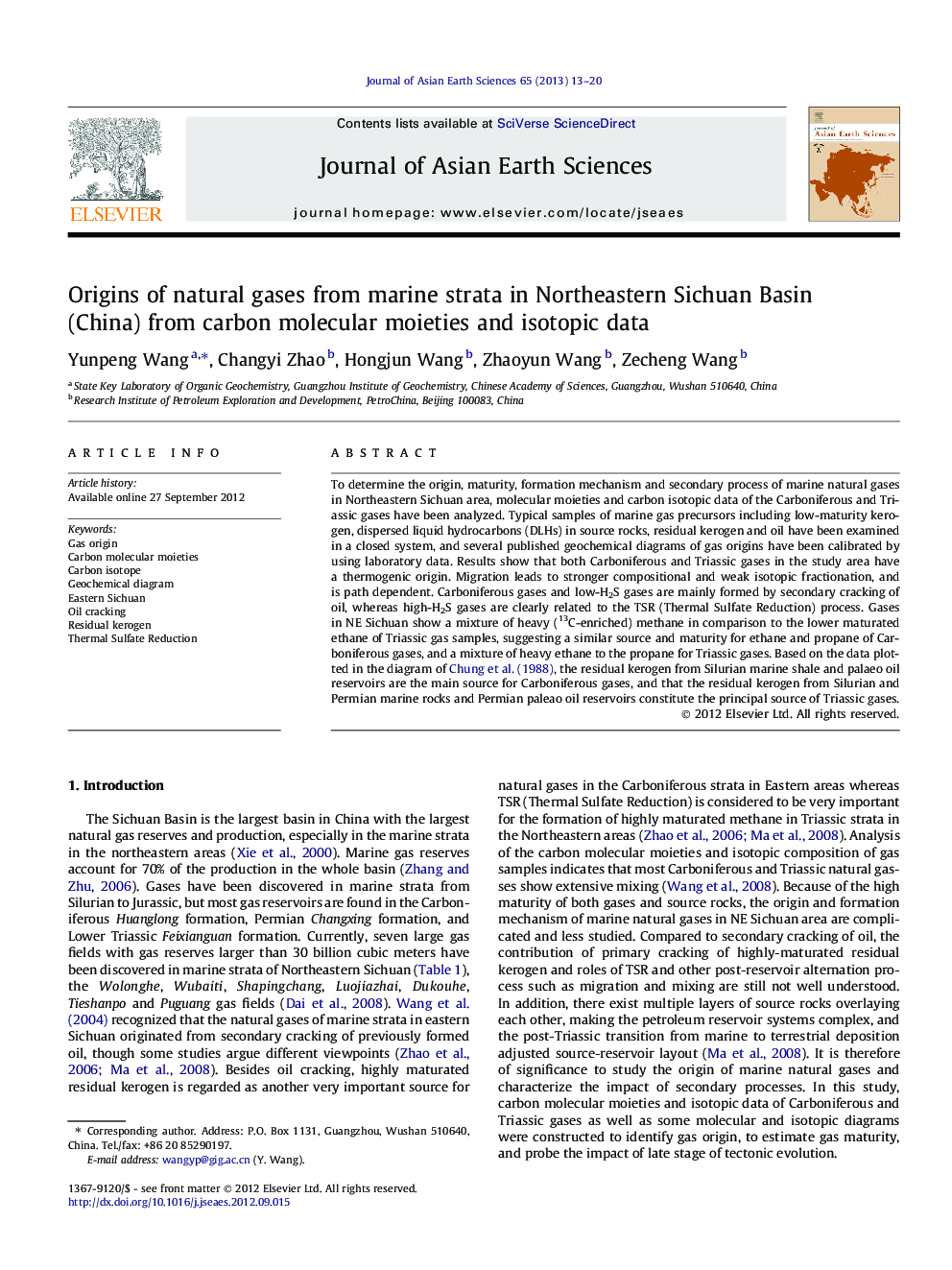| Article ID | Journal | Published Year | Pages | File Type |
|---|---|---|---|---|
| 4731191 | Journal of Asian Earth Sciences | 2013 | 8 Pages |
Abstract
To determine the origin, maturity, formation mechanism and secondary process of marine natural gases in Northeastern Sichuan area, molecular moieties and carbon isotopic data of the Carboniferous and Triassic gases have been analyzed. Typical samples of marine gas precursors including low-maturity kerogen, dispersed liquid hydrocarbons (DLHs) in source rocks, residual kerogen and oil have been examined in a closed system, and several published geochemical diagrams of gas origins have been calibrated by using laboratory data. Results show that both Carboniferous and Triassic gases in the study area have a thermogenic origin. Migration leads to stronger compositional and weak isotopic fractionation, and is path dependent. Carboniferous gases and low-H2S gases are mainly formed by secondary cracking of oil, whereas high-H2S gases are clearly related to the TSR (Thermal Sulfate Reduction) process. Gases in NE Sichuan show a mixture of heavy (13C-enriched) methane in comparison to the lower maturated ethane of Triassic gas samples, suggesting a similar source and maturity for ethane and propane of Carboniferous gases, and a mixture of heavy ethane to the propane for Triassic gases. Based on the data plotted in the diagram of Chung et al. (1988), the residual kerogen from Silurian marine shale and palaeo oil reservoirs are the main source for Carboniferous gases, and that the residual kerogen from Silurian and Permian marine rocks and Permian paleao oil reservoirs constitute the principal source of Triassic gases.
Keywords
Related Topics
Physical Sciences and Engineering
Earth and Planetary Sciences
Geology
Authors
Yunpeng Wang, Changyi Zhao, Hongjun Wang, Zhaoyun Wang, Zecheng Wang,
